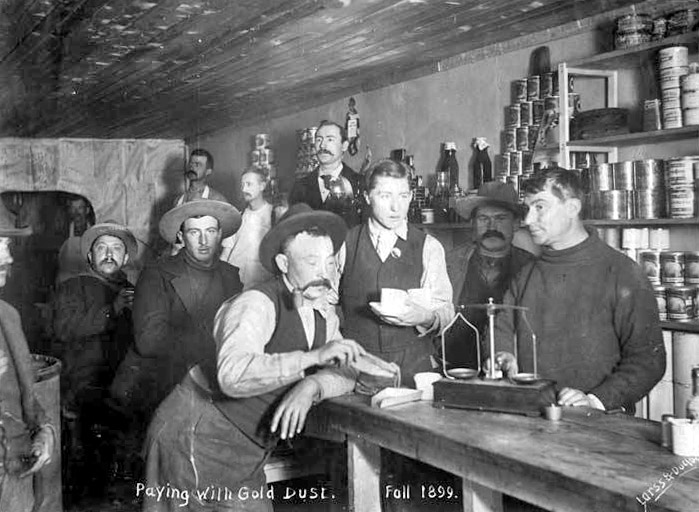The 1890s was the setting for a North American gold rush second only in fame to the ’49ers of San Francisco. Thousands of hopefuls made their way to the Klondike region in the Yukon with eyes as wide as nuggets, hoping for strikes, but the price was high, as violence and desperation abounded and privations were severe. Making matters worse was an apparent monopoly on food importation to the rugged terrain by a handful of ill-managed concerns. From an account in the July 23, 1897 Brooklyn Daily Eagle:
“Great Falls, Mont.–Frank Moss, an old time miner in this section, who four years ago, was one of a party of Americans to first visit the Klondike country, returned today and tells a story of horrors and starvation seldom equaled even in modern novels. He describes Klondike as a placer camp seven miles long and thirteen miles wide, located in a sink, walled in by boulders of rock 3,000 feet high. Gold, he says, abounds but no ordinary man can stand the hardships of the uncivilized region.
When Moss left here four years ago he was a sturdy fellow over six feet tall. From hardships and privation he is a cripple for life and badly broken in health. In three years, he says, he saw over 2,000 graves, made in the Klondike basin, a large majority dying from starvation. The steamship companies bring in all food and allow no private importation. Consequently it is not uncommon to go for weeks with but a scant supply and for days entirely without food. The gold brought in last week to Seattle, Moss says, does not represent the findings of individual shippers, but a large proportion was confiscated from the effects of those 2,000 miners who fell prey to the hardships. At the death of a man possessed of dust, his body was buried without a coffin and the dust divided among those who cared for him.
The richest strike, Moss says, has been made by a 21 year old boy named George Hornblower of Indianapolis. In the heart of a barren waste, known as Boulder Field, he found a nugget for which the Transportation Company gave him $5,700. He located his claim at the find and in four months has taken out over $1,000,000. The richest section, Moss says, is yet undeveloped. It is 100 miles from Klondike and known as the Black Hole of Calcutta. It is inhabited by ex-convicts of Bohemia and murders and riots take the place of law and order. A few months ago Klondike organized a justice committee and its laws prevail there now. With the great crowds preparing to go to the scene now, Moss says hunger and suffering will be great. Moss returns with $6,000 in dust and leaves tomorrow for his old home in Dubuque, Ia., where he will spend the balance of his years.”
Tags: Frank Moss, George Hornblower


